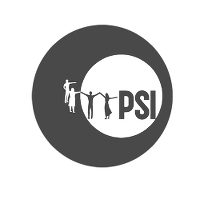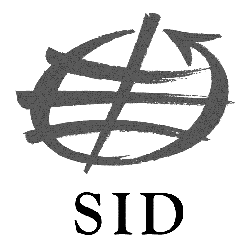By Meera Karunananthan, Blue Planet Project and Susan Spronk, University of Ottawa [fn]This text was originally published as part of the Water Justice Toolkit in 2016 (http://www.blueplanetproject.net/index.php/water-justice-toolkit/). The authors thank David Boys, David Hall and Shiney Varghese for their contributions. [/fn]
Public services take care of our most essential needs, but around the world many communities continue to fight to fully enjoy their rights to these services. Globally, communities have fought against private, for-profit finance models for essential public services like water and sanitation. Experience has shown that strong quality water and sanitation services that address the needs of all without discrimination, are accountable to the people they serve, and are responsible towards watersheds, must be publicly owned, financed and operated.
Despite growing evidence that the privatization of water and sanitation services has failed communities, proponents of the model often cite the lack of public funding as a reason to bring in private investors. This chapter challenges the myths surrounding private financing and outlines some key considerations for community activists and decision-makers seeking to promote or protect fair public financing models for water and sanitation services. While it provides an overview of strategies for public financing that are working for local governments around the world, it makes clear that there is much work to be done globally in order to establish equitable tax regimes to allow for independent self-sustaining public financing models. Campaigns for public financing for water and sanitation must be combined with efforts to ensure global tax justice.
How has private financing failed?
The idea that private financing is desirable is a powerful myth. Starting in the 1990s, cash-strapped governments began turning to private investors, hoping they would build or renovate much-needed infrastructure to reach underserved populations, such as low-income users or scattered populations in rural areas. Often multilateral lenders, such as the World Bank, forced governments to privatize services in exchange for loans needed to stabilize their economies. In other cases, governments privatized services hoping to attract new sources of financing and benefit from private sector knowledge.
Today, much of the empirical research shows that private sector participation has not only fallen short of these goals, it has resulted in governments failing in their obligations to ensure safe drinking water and sanitation for all. [fn]Hall/Lobina (2012). [/fn] In 2006, the World Bank concluded that private participation in infrastructure "has disappointed – playing a far less significant role in financing infrastructure in cities than was hoped for […]." [fn]Quoted in ibid., p. 7. [/fn]
This conclusion has to do with simple economics. Water and sanitation infrastructure requires high up-front costs. In order to recover these costs and make a profit, the private sector must either charge rates that are unaffordable to large segments of the population, or cut corners over the long run, affecting the quality of services, environmental standards and labour rights. In the 1990s, private companies took over Jakarta’s water services with the promise of a 22 percent return on investment in return for increasing service coverage and reducing water losses. In 2015, a Jakarta district court annulled the private concessions, arguing that the human right to water and sanitation had been violated, pointing to the failure of the private sector to live up to its promises.
In France, the private sector resorted to accounting tricks, only partially disclosing profits within municipal financial reports in order to avoid reinvesting proceeds. In Africa, where the needs for investment are greatest, the private sector has proven unwilling and unable to meet the needs of populations in terms of infrastructure and services. The public sector remains the greatest source of finance. [fn]Ibid. [/fn]
Private investors must be lured with policies that protect their profits, particularly in markets that are deemed risky, or that are in most need of new infrastructure. Such policies often end up violating the rights of poor people. For example, in the 1990s, full cost recovery tariff policies in South Africa led to the introduction of pre-paid water meters. When people could no longer afford to pay, they returned to using unsafe sources of water, resulting in a cholera epidemic that killed hundreds of people.
Private companies have also pushed governments to sign investment treaties that protect the corporate right to profit over social needs. In Argentina, a bilateral investment treaty (BIT) with France allowed French multinational water companies to sue the government when it refused to raise water rates in the context of the country’s 2001-2002 financial crisis. Often, multinational corporations will create a shell company to benefit from an agreement when the country they are investing in does not have a BIT with its home base, as was the case with Suez company in Bolivia, which created a Dutch subsidiary in the absence of an agreement with its home base, France.
Finally, relying on private, external finance sources also exposes the government to currency risk. Multinational corporations usually insist on fixing water rates in US dollars, which can be extremely expensive in the event of currency devaluation, as noted in the Argentine case mentioned above. Corporations are simply less able to adapt to local needs and circumstances since they have one legal mandate – to return profits to their shareholders.
Public financing is possible
Water and sewage needs can be met through public financing. Public financing continues to be the main source of financing for water and sewage infrastructure in the world.
In high-income countries, universal water and sanitation infrastructure was built by the public sector. In the context of rapid urbanization and industrial development in 19th-century Europe, water utilities were created or taken over by municipal governments in nearly all countries, including the UK. Even in France, where private operators have been present in the sector since the mid-19th century, it was municipal governments that financed the extension of the network. As a Public Services International Research Unit (PSIRU) report concludes, water systems around the world have been built and extended almost exclusively by the public sector. [fn]Ibid., p. 4. [/fn]
In middle-income countries in Africa, Asia, the Middle East and Latin America, the role of the State in investing in infrastructure is explicitly recognized as a central element in development and economic growth. In Africa, restoring the role of the State in financing infrastructure is seen as a way to break from historically exploitative relationships with donors and private corporations.
Meeting the infrastructure deficit is less expensive than one might think. Research by the PSIRU showed that countries with the highest level of need for drinking water and sewage connections could deliver these services over a 10-year period with less than 1 percent of GDP per year. [fn]Ibid., p. 13. [/fn]
Why public financing is better
Before the neoliberal turn, water and sanitation infrastructure was long considered to be a ‘public good’ because the benefits of water and sanitation infrastructure are realized at the level of the economy as a whole in terms of improved public health for the entire population over the long term. Saving lives and containing the spread of diseases by providing quality water and sanitation services translate into benefits for the economy as a whole.
Studies documenting experiences of women from around the world show that the consequences of privatization including higher tariffs, greater disconnection rates, declining water quality and lack of decision-making power have a disproportionate effect on poor women who are primarily responsible for managing household needs. [fn]National Network on Environments and Women’s Health (2009). [/fn] Research from Dhaka, Bangladesh [fn]Sultana/Mohanty/Miraglia (2013). [/fn] and Jakarta, Indonesia [fn]Karunananthan (2015). [/fn] shows that privatization has increased the physical and emotional burden placed on women slum dwellers in those cities.
Finally, public financing is more financially viable than private financing. Ideally the State would finance construction directly from tax revenues. However, if it chooses to borrow, it can do so more cheaply than can the private sector. The public sector pays lower rates of interest on loans than the private sector due to the superior security of tax revenue. From the perspective of banks, private sector lending is actually riskier since the private sector may not be able to secure long-term returns on sunk investments. That is why, without exception, the large expenses associated with building new infrastructure – not just operation and maintenance of existing infrastructure – require financial support from government.
Methods of public financing
Taxes are the most important source of public financing. There are many different options when it comes to designing equitable tax policies. While the below methods are more readily accessible to local governments, it is important to note that central governments have a key role to play in ensuring that local governments have sufficient public revenues to provide quality water and sanitation services and to ensure consistency between poorer and richer neighbourhoods with varying tax bases. In addition, they are responsible for funneling money from international donors. As such, sustainable publicly financed water and sanitation systems rely heavily on strong commitments from central governments.
The main sources of municipal finance are property taxes, service charges/tariffs, fines, and equitable share transfers from central government. Since property taxes are one way to measure asset wealth, this method is one the most equitable options for municipalities to finance water and sewage infrastructure. In the UK, for example, the majority of households pay annual charges based on the value of their property rather than the metred consumption of water. Corporations often get away with paying very low property taxes, denying municipalities an important source of revenue. This is in part due to the drive to attract investments from corporations seeking out municipalities offering the lowest property tax rates. [fn]Hall/Lobina (2012). [/fn]
There are also creative ways to cross-subsidize different public services. In Ecuador, for example, a special tax was levied on telecommunications services, which was transferred to the public water company and used to improve water and sanitation.
Municipalities may use other innovative taxes including a hotel/tourist tax, a sin tax (alcohol, tobacco), a road tax or a carbon tax. The important consideration is that all of these be combined in such a way that all members of the community contribute according to their means, and that the corporate, institutional and wealthy are not able to avoid paying their fair share.
In addition to taxes, high- and middle-income countries have also used bonds to finance water and sewage infrastructure. Countries in the global South are also beginning to look at bonds as a source of funding for municipal infrastructure. In India, 25 municipal bonds have been issued since 1997 out of which 17 have financed water and sanitation projects. [fn]Gupta (2013). [/fn] Municipal bonds have also been issued in South Africa, [fn]Brand (2014). [/fn] Senegal [fn]Swope/Kassé (2015). [/fn] and Mexico.
Public banks also have an important role to play in financing infrastructure. As development specialist Thomas Marois argues, State-owned banks have funded public infrastructure projects in countries as diverse as Brazil, China, Costa Rica, India, South Africa, Turkey and Venezuela. He estimates that public banks control 22 percent of total banking assets in emerging countries and 8 percent in advanced countries, representing a significant source of finance. [fn]Marois (2013). [/fn]
A 2012 PSIRU study shows that very few countries are unable to publicly finance water and sanitation through national resources. [fn]Hall/Lobina (2012). [/fn] In these cases, external aid may supplement public investments in infrastructure. Meeting the water and sewage needs will require better targeting by donor countries from the global North and South.
Water tariffs – better thought of as user fees for services – are not technically a source of public financing. Because they are more sustainable than financing from the private, for-profit sector, tariff strategies must be equitable and comply with human rights standards. For example, a base lifeline supply in South Africa provides households with 6,000 litres of water per month for free before user fees are charged for consumption that exceeds this amount. Given that often, even with such measures, tariffs disproportionately penalize low-income households – particularly those with many people living under one roof, or that have higher water needs due to a large number of children or ill family members – several safeguards need to be in place to ensure that the human right to water and sanitation is not violated, including public participation in decision-making regarding fee structures and measures to ensure that tariffs are affordable to all. They should also include measures that would enable higher-income households to cross-subsidize low-income households. And even with such measures in place, tariffs can only be a supplement for revenue generation through taxation.
In India, the Delhi state administration came to power on a promise of "free basic water" and demonstrated during its first year how quickly this goal could be made a reality. In 2015, Delhi began providing 20,000 litres of "free water" per month to each family, and charging steep tariffs for consumption above that fairly generous amount. This new policy generated greater revenues for the utility that year than previous years.
While the above methods are more readily accessible to local governments, it is important to note that central governments have a key role to play in ensuring that local governments have sufficient public revenues to provide quality water and sanitation services and to ensure consistency between poorer and richer neighbourhoods with varying tax bases. Central governments have much higher powers of taxation through income taxes, consumption taxes, corporate taxes and royalties. In addition they are responsible for funneling money from international donors. As such, sustainable publicly financed water and sanitation systems rely heavily on strong commitments from central governments.
Making public financing work for you
Eliminating the profit motive allows local governments to reinvest in the water and sanitation system and better serve the needs of communities and the environment. When Paris took its water and sanitation services back into public hands, it was able to save 35 million euros while reducing tariffs by 8 percent in the first year. [fn]Pigeon (2012). [/fn] The savings allowed the utility to invest in watershed protection measures and stronger processes for public participation.
The public sector isn’t always perfect – there are many poorly performing public utilities around the world. However, the private sector’s inherently undemocratic, profit-driven nature makes it ill-suited to the responsibility of providing equitable quality water and sanitation services. To reject private financing is to reject the continuous drive to protect or expand profit margins; it means services can become accountable to the communities they serve rather than to shareholders (often in a foreign country). It also ensures that services are not beholden to investment protection treaties that safeguard the markets and profit margins of foreign investors, but rather to national and local public policies, human rights standards and environmental regulations.
However, the battle does not end with eliminating private financing in the sector. Efforts must be made to ensure that public financing serves to build more democratic, participatory and accountable systems that serve the needs of communities. Community engagement is a vital component of this process and governments must ensure that mechanisms are set up to effectively involve water users in decision-making. For example, in Paris, a citizens’ observatory allows community organizations, water users, researchers and other interested parties to participate in the governance of their water utility. [fn]L‘eau de Paris (www.eaudeparis.fr/lentreprise-publique/gouvernance/#observatoire_eau). [/fn] In Venezuela, technical water committees (or mesas técnicas de agua) bring local residents together with representatives of the public water utility to monitor services and help plan state-financed infrastructure development. [fn]McMillan/Spronk (2013). [/fn] In both cases, public services were improved by making information more accessible and better engaging the communities served.
Meera Karunananthan is international water campaigner for the Blue Planet Project, a global initiative of the Council of Canadians aimed at promoting water justice around the world.
Susan Spronk teaches in the School of International Development and Global Studies at the University of Ottawa. She is a research associate with Municipal Services Project and has published several articles on class formation and water politics in Bolivia.
Brand, Robert (2014): Joburg to sell bonds in bid to raise funds for infrastructure. In: Business Day Live, 24 April 2014.
Gupta, Surojit (2013): Time Indian cities work up to municipal bonds. In: The Times of India Business, 20 July 2013.
http://timesofindia.indiatimes.com/business/india-business/Time-Indian-cities-woke-up-to-municipal-bonds/articleshow/21179285.cms
Hall, David/Lobina Emanuele (2012): Financing water and sanitation: public realities. A report for Public Services International for the 6th World Water Forum, Marseille, March 2012. London: Public Services International Research Unit – PSIRU.
www.world-psi.org/sites/default/files/documents/research/psiru_financing_water_sanitation.pdf
Karunananthan, Meera (2015): Water justice gathering in Jakarta celebrates 2015 victories and highlights struggles ahead. Ottawa. The Council of Canadians.
https://canadians.org/blog/water-justice-gathering-jakarta-celebrates-2015-victories-and-highlights-struggles-ahead
Marois, Thomas (2013): State-owned banks and development: Dispelling mainstream myths. Kingston: Municipal Services Project.
http://municipalservicesproject.org/sites/municipalservicesproject.org/files/event/OccasionalPaper21_Marois_State-owned_Banks_and_Development_Dec2013.pdf
McMillan, Rebecca/Spronk, Susan (2013): Revolutionary Grandmothers and Radical Engineers: Venezuela’s Technical Water Committees. Ottawa: University of Ottawa, Faculty of Social Science.
https://socialsciences.uottawa.ca/international-development-global-studies/sites/socialsciences.uottawa.ca.international-development-global-studies/files/technicalwaterweb.pdf
National Network on Environments and Women’s Health (2009): The Significance of Privatization and Commercialization Trends for Women’s Health. Submission to the Office of the High Commissioner for Human Rights for the Independent Expert on the issue of human rights obligations related to access to safe drinking water and sanitation. Toronto.
www.ohchr.org/Documents/Issues/Water/ContributionsPSP/Council_of_Canadians.pdf
Pigeon, Martin (2012): Une eau publique pour Paris: Symbolism and success in the heartland of private water. In: Pigeon, Martin et al. (2012): Putting water back into public hands. Amsterdam: Transnational Institute.
www.municipalservicesproject.org/sites/municipalservicesproject.org/files/uploadsfile/remunicipalisation-chap2-Paris.pdf
Sultana, Farhana/Mohanty, Chandra Talpade/Miraglia, Sarah (2013): Gender justice and public water for all: Insights from Dhaka, Bangladesh. Kingston: Municipal Service Project.
http://municipalservicesproject.org/sites/municipalservicesproject.org/files/event/Sultana-Mohanty-Miraglia_Gender_justice_and_public_water_for_all_Insights_from_Dhaka_Bangladesh_Apr2013.pdf
Swope, Christopher/Kassé, Tidiane (2015): How Dakar (almost) got its first municipal bond to market. In: Citiscope, 19 February 2015.
http://citiscope.org/story/2015/how-dakar-almost-got-its-first-municipal-bond-market








